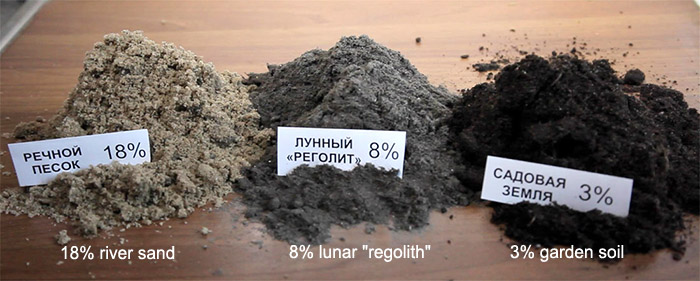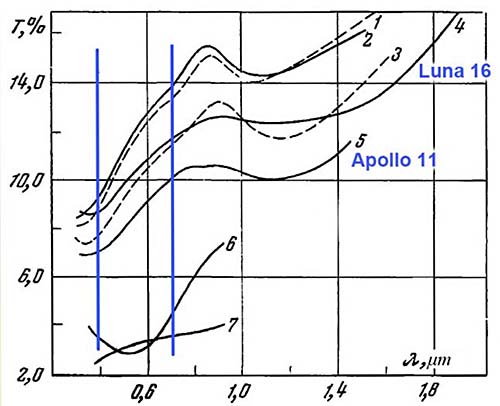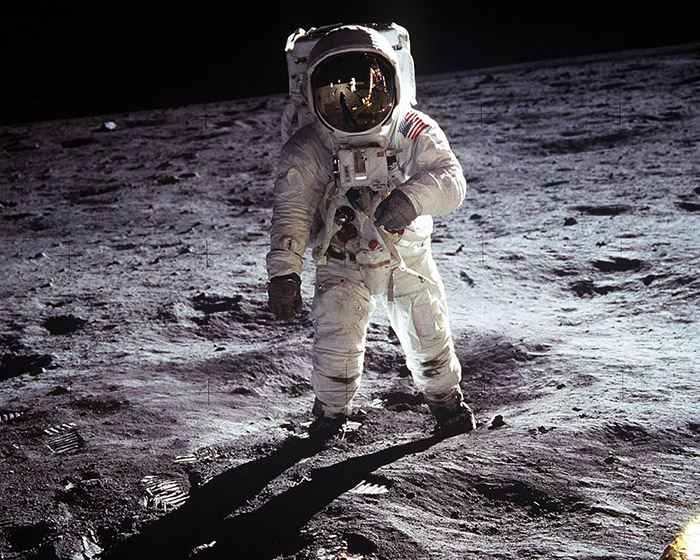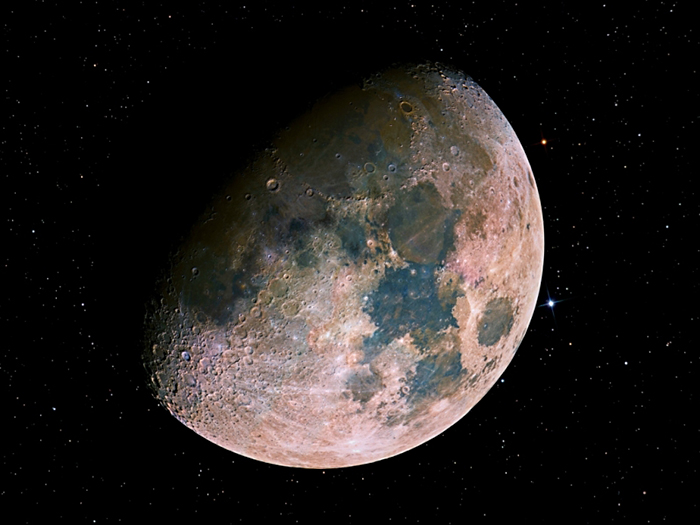What Colour is the Moon? Part One
Associate Professor Camera Department, Russian State University of Cinematography (VGIK)
What Colour is the Moon? Part Two on Next Page
What does the lunar surface material (moon dust) really look like? Is the regolith completely grey, as depicted in the majority of the Apollo photographs, or is the lunar surface actually brown? Is the Moon black and white or is it more colourful? It has been claimed that the lunar 'soil' looks more like black earth.
To address this question, I have undertaken a very simple experiment.
As the average reflectance of the lunar soil, the albedo, is known to be 7-8%, then with the help of a standard greyscale and a professional luminance meter used by professional cinematographers to determine the correct exposure, I selected an object of the same brightness as the lunar regolith. For this I used soil in front of my window. But because the wet soil was a somewhat darker than the required 7-8%, I mixed it with a small amount of cement as illustrated below:

Then to determine the exact colour of the lunar regolith and not just its brightness, I used a X-Rite dtp-41 spectrophotometer available at our department at the University of Cinematography.
 |
With the aid of this instrument I selected a substance that most closely followed the spectral reflectance plots, taken from the book Lunar soil from the Sea of Fertility.
I marked the visible part of the spectrum from 400 to 700 nm with two lines (vertical blue lines in the graph below):

In the visible part of the spectrum, the reflectance spectra plot of the lunar soil rises almost linearly; in the blue portion of the spectrum, the reflection coefficient is lower, and in the red portion it is higher. That unambiguously indicates that the lunar soil is not grey but brown.
I copied the values of the three curves corresponding to the diffuse reflection coefficient of the material from the Sea of Fertility (Luna 16), the soil from the Sea of Tranquility (Apollo 11), and the material from the Ocean of Storms into an Excel spreadsheet. I took a deep brown piece of putty.
It transpires that the integral reflection coefficient of the deep-brown putty (modeling clay) is the same as the soil of the lunar maria.

At this point the colour of the putty was more intense than the colour of the lunar surface. Therefore, by adding a small amount of blue putty to the brown I lowered the colour saturation (thereby increasing the reflectance in the blue-green part). And by adding some black putty I reduced the overall reflectance.
After thoroughly mixing and rolling the putty into a smooth material and measuring it in the spectrophotometer, I obtained almost the same reflectance spectra plot as the lunar material samples from the Apollo 11 Sea of Tranquility.

For comparison, I took a picture of a cube similar in colour to the lunar soil on a standard Kodak greyscale. The actual colour of the lunar maria is similar to the cube on the right below. This is what the surface of the Sea of Tranquility should really look like where, allegedly, Apollo 11 landed.

Therefore I can say that in the photograph below (taken apparently by a probe two years before the Apollo missions) the colour of the Moon's surface is represented correctly:

For some reason this picture is captioned "View from the Apollo 11 shows Earth rising above the moon’s horizon", as if this picture was taken by Apollo 11 astronauts in 1969.
However, we have seen that the astronauts brought back pictures with differently-coloured lunar regolith (moon dust):

Many people were discouraged by the fact that the Moon was not just grey, but blue-gray and grey-purple, and not brown.
The following photograph is of Buzz Aldrin (Apollo 11, July 1969).

Below is a colour photograph of the Moon (recent image):

I have reason to believe that the decision to depict the colour of the lunar surface material as being grey in the Apollo lunar surface pictures was taken two or three years prior to the Moon missions in 1966 or 1967, and was based on the Surveyor images.
The pre-production had begun and the studio stage was set with this grey-coloured ‘soil’ for the simulation of the manned lunar landings.
In the second part of this experiment I will explain why the material in the pictures turned completely grey. This is my specialist subject, for several years at the University of Cinematography I have been teaching the discipline of Chromatics and the issue of colour distortion – it is my favourite topic.
Continued on Next Page
Leonid Konovalov
Aulis Online, August 2013
English translation from the Russian by BigPhil
See also: Aldrin Descending the Ladder, Mythbusters Exposed
|
Leonid Konovalov graduated with honours from the Camera Department of VGIK in 1987. Currently he is an Associate Professor of the Camera Department of the Russian State University of Cinematography. He was a camera operator or an additional camera operator on many films and series. He was camera operator on the movie The Belovs which received the State Award in 1994.
Leonid Konovalov engineered the non-standard photographic films RETRO and DS-50 at the Shostka Chemical Plant "Svema" which were used in the production of 14 movies. In the magazine "Cinema and Television Technology" (in Russian) Leonid has published seven articles in scientific and technical topics. He also has written the book How to Make Sense of Films.
AULIS Online – Different Thinking
